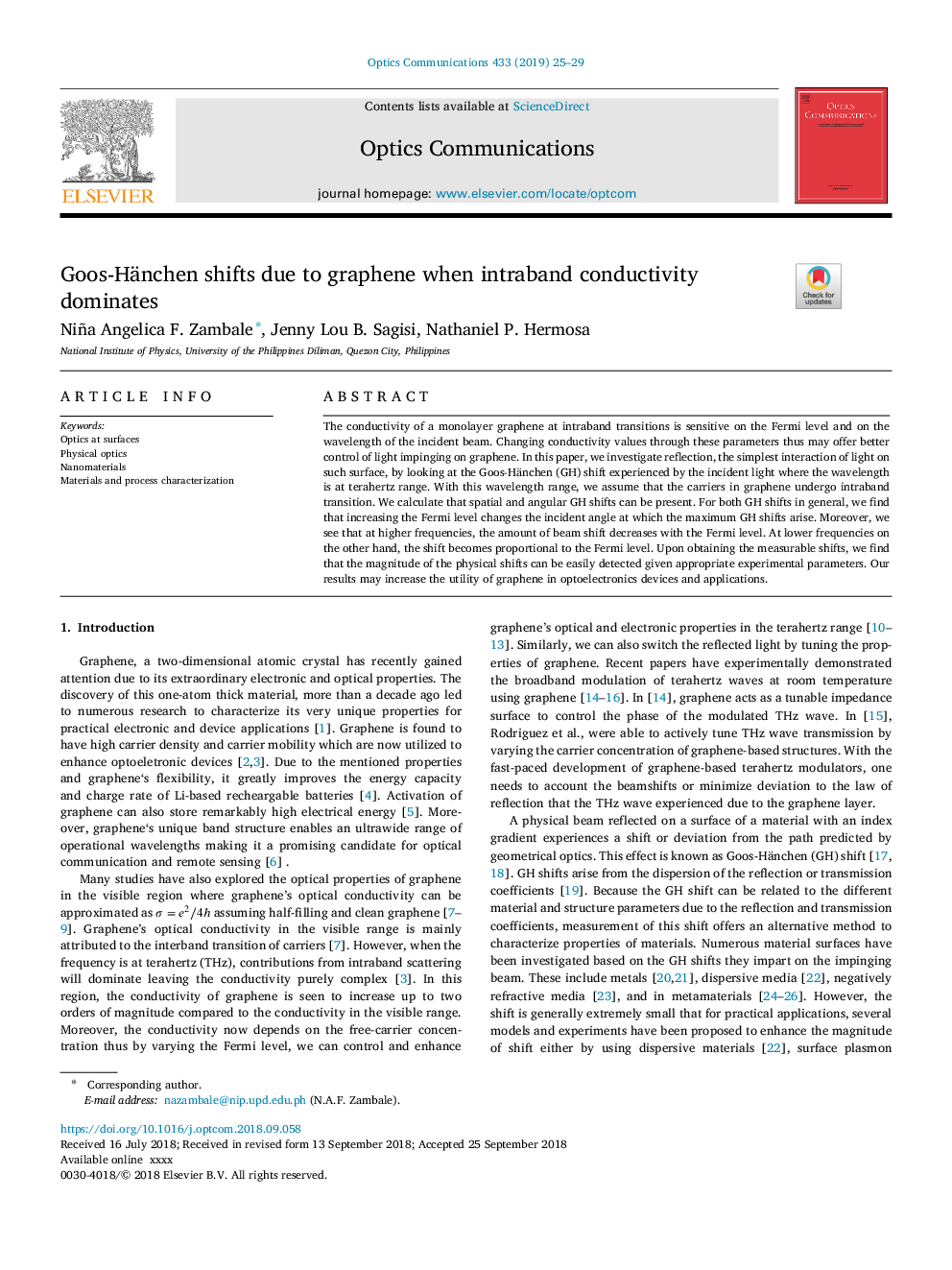| Article ID | Journal | Published Year | Pages | File Type |
|---|---|---|---|---|
| 11007777 | Optics Communications | 2019 | 5 Pages |
Abstract
The conductivity of a monolayer graphene at intraband transitions is sensitive on the Fermi level and on the wavelength of the incident beam. Changing conductivity values through these parameters thus may offer better control of light impinging on graphene. In this paper, we investigate reflection, the simplest interaction of light on such surface, by looking at the Goos-Hänchen (GH) shift experienced by the incident light where the wavelength is at terahertz range. With this wavelength range, we assume that the carriers in graphene undergo intraband transition. We calculate that spatial and angular GH shifts can be present. For both GH shifts in general, we find that increasing the Fermi level changes the incident angle at which the maximum GH shifts arise. Moreover, we see that at higher frequencies, the amount of beam shift decreases with the Fermi level. At lower frequencies on the other hand, the shift becomes proportional to the Fermi level. Upon obtaining the measurable shifts, we find that the magnitude of the physical shifts can be easily detected given appropriate experimental parameters. Our results may increase the utility of graphene in optoelectronics devices and applications.
Related Topics
Physical Sciences and Engineering
Materials Science
Electronic, Optical and Magnetic Materials
Authors
Niña Angelica F. Zambale, Jenny Lou B. Sagisi, Nathaniel P. Hermosa,
